Oliver Hinson is our newest writer. Oliver has written about the NCAA cross country and USA cross country.
Last Friday, I called Oliver, left him a message and said, “Hey, Oliver, how about a piece on the Marathon Trials?”. Oliver juggled his schedule at American University around, and voila, this piece.
I like Oliver Hinson’s style. He is a journalist, full of vigor and expression. I hope you enjoy his pieces like I do.
My Five Biggest Takeaways from the Men’s Olympic Trials Marathon
by Oliver Hinson, @oliver_hinson24
As someone responsible for covering this sport, I find it a little embarrassing to admit that I had never fully watched a marathon before today. I’m a lot more familiar with the track side of things, but I suppose there’s a first time for everything. Of all the possible entry points, I’m glad I chose today.
This was one of the most well-covered events I’ve watched, and the coverage started long before the horn went off. Even for those who don’t pay much attention to the road events, it was impossible to miss the hype around this race. Starting with the debate over the start time in Orlando and ending with pre-race picks from everyone you know, there was never a lack of attention.
Granted, this is the pinnacle of US road racing (yes, I said it), so I would expect something along those lines, but I was impressed nonetheless.
In case you missed it, Conner Mantz broke the tape in 2:09:05, with Clayton Young one second behind him. Leonard Korir was third in 2:09:57; while that doesn’t guarantee him a spot in Paris, it may have been fast enough to unlock one in the months to come.
Aside from that, though, there was so much more to take away from the race. Let’s go through a few of these takeaways:
The top dogs are here. They’re not leaving.
There’s always an element of randomness in these races, and we saw a lot of that today. That being said, there was one thing that a lot of people got right in their predictions, mostly because it seemed pretty obvious: Conner Young and Clayton Mantz were near locks. They were the only two coming in with the Olympic standard, and their training had never looked more impressive.
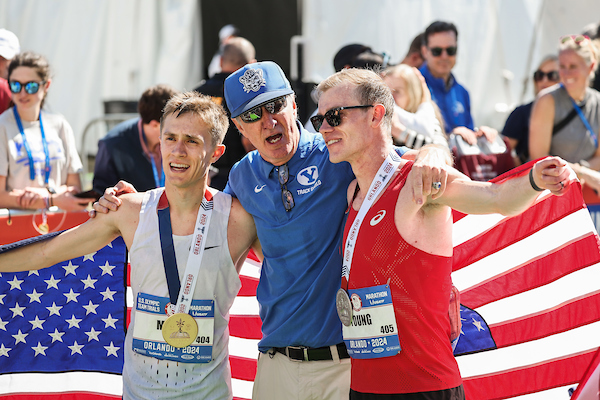
Orlando, Florida
February 3, 2024, photo by Kevin Morris
They proved everyone right. They never lost their form or looked too fatigued, and Young’s displays of excitement in the final stretch make me think he could have extended that effort to 50k.
If there’s one thing we should learn from today, it’s that the new guard is here. This was only Mantz’s fourth marathon, and while Young has slightly more experience, he’s only found himself in the spotlight recently.
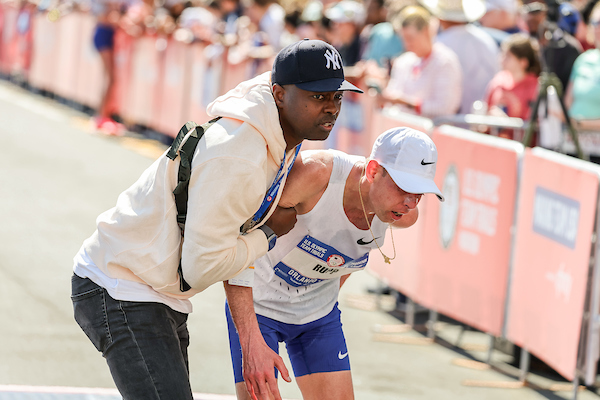
Orlando, Florida
February 3, 2024, photo by Kevin Morris
Meanwhile, with older icons like Galen Rupp seemingly on their way out (Rupp suffered from cramps and finished in 2:14:07), it’s not far-fetched at all to say that the US is in a new age of marathoning with Mantz and Young at the pinnacle. Personally, I love this: how often do we get to see training partners rule an event together?
They’re arguably still a few years from their respective peaks, so I think we’ll see some fireworks for some time. In the meantime, let’s hope they put on a show in Paris.
Zach Panning is the ultimate pacer.
If Zach Panning opened up some sort of GoFundMe for a charity of his choice today, he could probably raise thousands of dollars. He was in and out of the lead from miles 6 to 23, and he pushed the pace down to sub-4:50 for most of that stretch, putting the Olympic standard of 2:08:10 within reach. In a championship event with no pacers, Panning’s contributions cannot be overstated, and Young even gave him a shoutout in his post-race interview.
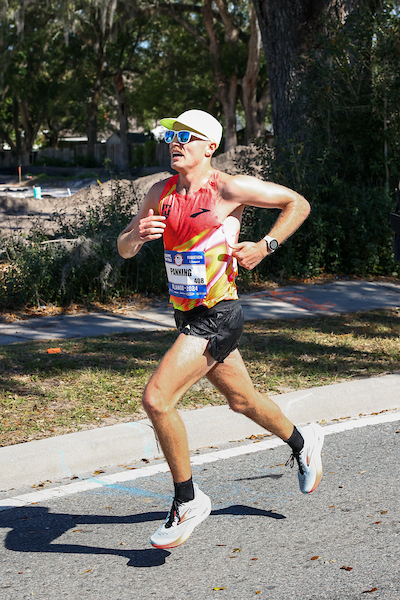
Orlando, Florida
February 3, 2024
Around mile 19, Mantz, Young, and Panning took the pack from five to three, and it would have been easy to think that the field was set (I thought as much). By mile 23, their lead over Elkanah Kibet in fourth place was nearly 40 seconds, and although Panning showed signs of fatigue, the finish seemed close enough that perhaps he could simply power through.
And then, he dropped. By mile 24, he was halfway between Mantz and Kibet. By mile 25, Kibet had caught up, and Panning had absolutely no response. His 26th mile was a 6:03, and he eventually slipped to 6th place.
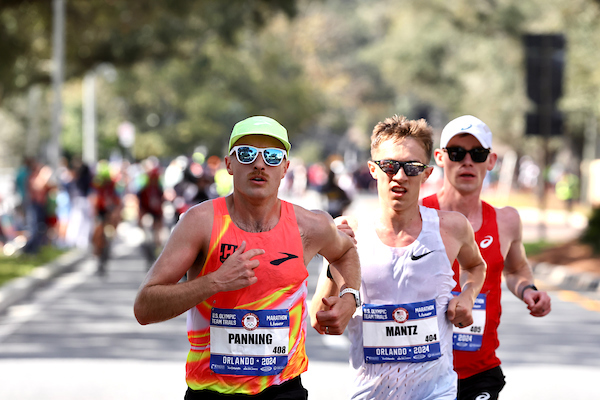
For Leonard Korir, who came from behind to snag third place, Panning’s efforts will undoubtedly be important. Korir’s time of 2:09:57 was well off the Olympic standard, but it will likely be fast enough to unlock a third qualifying spot for the US by August.
So, hold your head high, Zach Panning. Your performance reminds us that the marathon is a beast unlike any other, and that the heat is no joke. It really doesn’t matter what the results say; you’re a hero, Zach.
Complexities make the race.
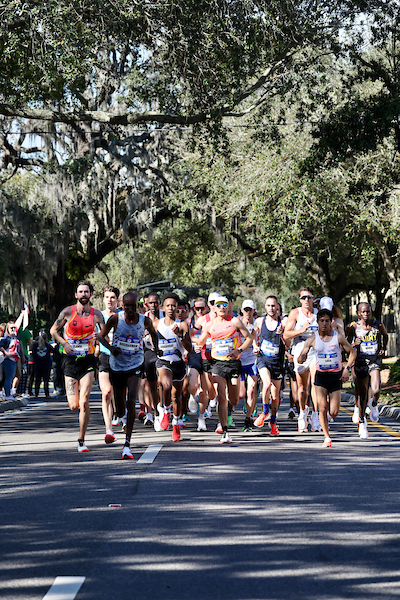
Yes, the qualifying process was complicated, but honestly, it was kind of fun. If there was no pressure on time, we would have had a classic “bunch up and let it rip” race, but a 2:15 wouldn’t have done anyone much good. It was a lot more exciting to watch the race on two fronts: who’s going to be in the top three, and are they going to Paris? We never would have seen the push from Panning if time didn’t matter, so think twice before you ask for simpler qualifying procedures?
The more we know, the better.
This principle is by no means attached to this race, or even the marathon in general – it just so happens that today was a perfect example.
It’s pretty obvious that social media is changing the sport; we know what workouts are happening, we often know when guys are injured, and we occasionally get a glimpse of the complex relationships between athletes.
All of this, I say, makes the sport better, and in an event like this one, it carries a lot of significance. Imagine trying to produce coverage of a marathon with only seeding knowledge; granted, it may have gotten you pretty far today with the brilliance of Conner Mantz and Clayton Young, but the pre-race shows would have lasted about five minutes.
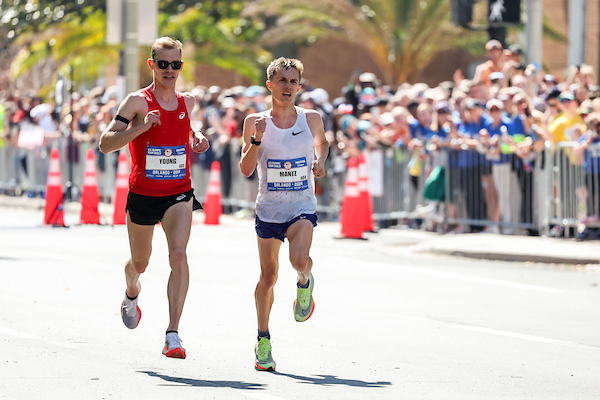
Orlando, Florida
February 3, 2024, photo by Kevin Morris
But we knew about Zach Panning’s recent 16-mile workout at a 4:47 pace. We knew about CJ Albertson’s heat simulation treadmill runs with heat lamps and boiling water. We knew about Mantz’s ridiculous 61:55 half marathon workout in early January, as well as his chemistry with Young, his training partner.
All of these things make the race better because they make things to look out for. Around mile 18, Mantz and Young performed a little high-five; it would have been easy to miss, but the Peacock broadcast picked it up and made sure to let the audience know.
Suddenly, we’re not just watching guys pound the pavement for two hours. There are heroes and villains (okay, maybe not that many villains), which is what the sport needs in order to grow. I love it.
The marathon is a lot like March Madness.
From the time Orlando was announced as the host city for the Trials, there has been nonstop discussion about the implications of such a hot, humid climate for a marathon. Eventually, the start time was moved from noon to 10 AM, but it was still a foregone conclusion that there would be carnage, and that assumption proved right. First, it was fan-favorite Scott Fauble who dropped out due to stomach issues early on. Then, Rupp dropped off. Eventually, there was the pack of five with Mantz, Young, Panning, Colley, and Kibet, but even that didn’t hold. By the time Mantz crossed the line, the field looked much different than most people thought it would.
Essentially, trying to pick the winners in an event like this is like trying to win your office bracket. The more you know about the sport, the worse you’ll end up faring, as you will constantly second-guess yourself. Take Rupp, for example. Everyone knows he’s had his fair share of injuries in the last few years, but when it came time to make predictions, he was hard to count out. How can you count out a two-time Olympian? You just don’t. And yet… maybe we should have.
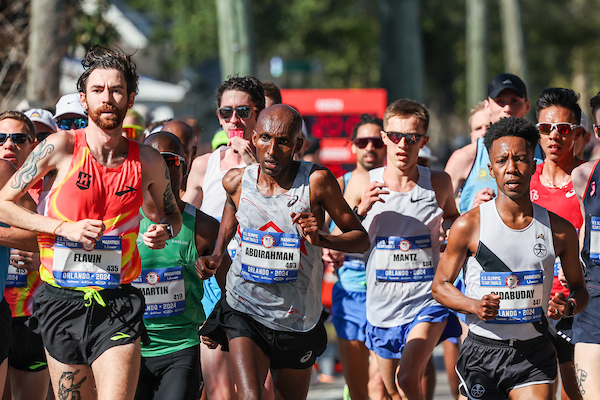
Orlando, Florida
February 3, 2024, photo by Kevin Morris
Even as the race progresses, it seems nothing is sure until the very end. Everyone thought Zach Panning was going to Paris… until he didn’t. No one saw Leonard Korir coming until about mile 25. And let’s give a shout-out to CJ Albertson, who dropped off from the lead pack but then made the comeback of his life to finish in the top five.
You know how the winner of the office bracket always seems to be the one person who never follows the sport and just picks by seeding? They would have won today, too. Just saying.
How does it feel from the perspective of someone who is barely qualified?
This isn’t exactly hard-hitting, but I couldn’t help thinking about it the entire time. For the top guys, this race was filled with pressure. They know they can make the Olympics and that this is their only shot in four years.
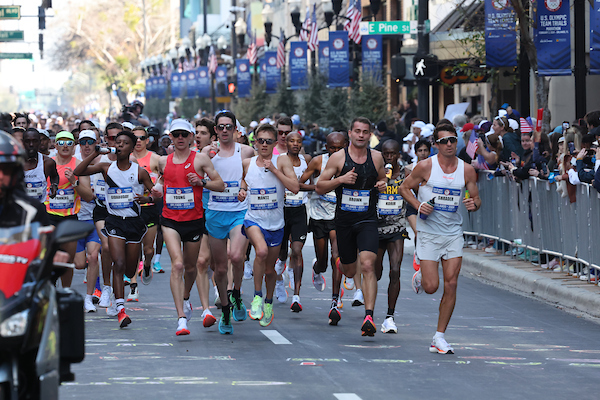
For someone whose celebration was making the Trials in the first place, it had to be a much different experience. Granted, their celebration is running another marathon in dreary conditions, but there’s no pressure. They get to spend a weekend in Orlando and tell everyone that they competed in a US Championship. What a thrill.

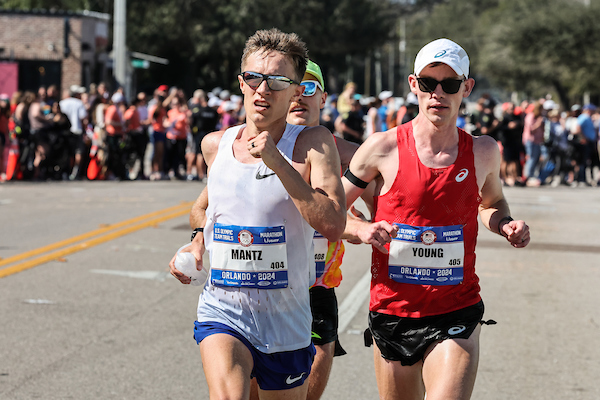





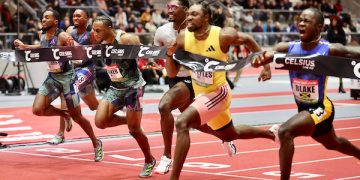
















Larry, Oliver — Not even one word about the women? Shame on you!
Keith, Oliver wrote one column on the marahton, I wrote four columns on the women. Thanks for your comments.
Kevin, another story we did over the weekend, perhaps you will like it, https://www.runblogrun.com/2024/02/making-the-olympic-team-some-thoughts-on-emily-sisson.html
Kevin,, check out the 62 social media posts we did during the race and the 32 we did prior to the marathon.
Here is one of the stories, In Praise of Fiona O’Keeffe, In Praise of Fiona O’Keeffe , by Larry Eder, https://www.runblogrun.com/2024/02/in-praise-of-fiona-okeeffe.html
Thanks for your note that you did not notice Men in the title. For the record, RBR did 4 pieces on the top women in Orlando. We are also doing the five deep thoughts on women’s race.
I’ve noticed that the best marathoners always run many 5k’s on the track and compete in the fastest half marathons around the world. Just curious on what you and your staff of writers think. Tough and appropriate workouts for the marathon are needed, but so are races leading up to the race day marathon as one can’t actually run many marathons prior to the big day.
There are many ways to get to the front of the pack in a marathon, John! If one looks at the very best, they will see a variety of methods. Eliud Kipchoge began in XC, then, the track, then, took 3 years to transistion to the roads. Meb Keflizighi, a championship type marathoner, who also won NYC and Boston, is the exception, but Meb and Eliud are old school. I find marathoners who have long term approach, by that I mean, that they begin in cross country, move to the track, then roads have longest careers. I find Marathoners who come from nowhere to be, well suspect. But, there is so much money in marathoning now, many unscrupulous characters are encouraging talented athletes to take a short term approach. I raced 30-35 times a year, with one marathon build in. When I did 4 marathons in one year, I had terrible results. I then, took a break from the marathon, and voila, big PB. Thanks for your question, John!